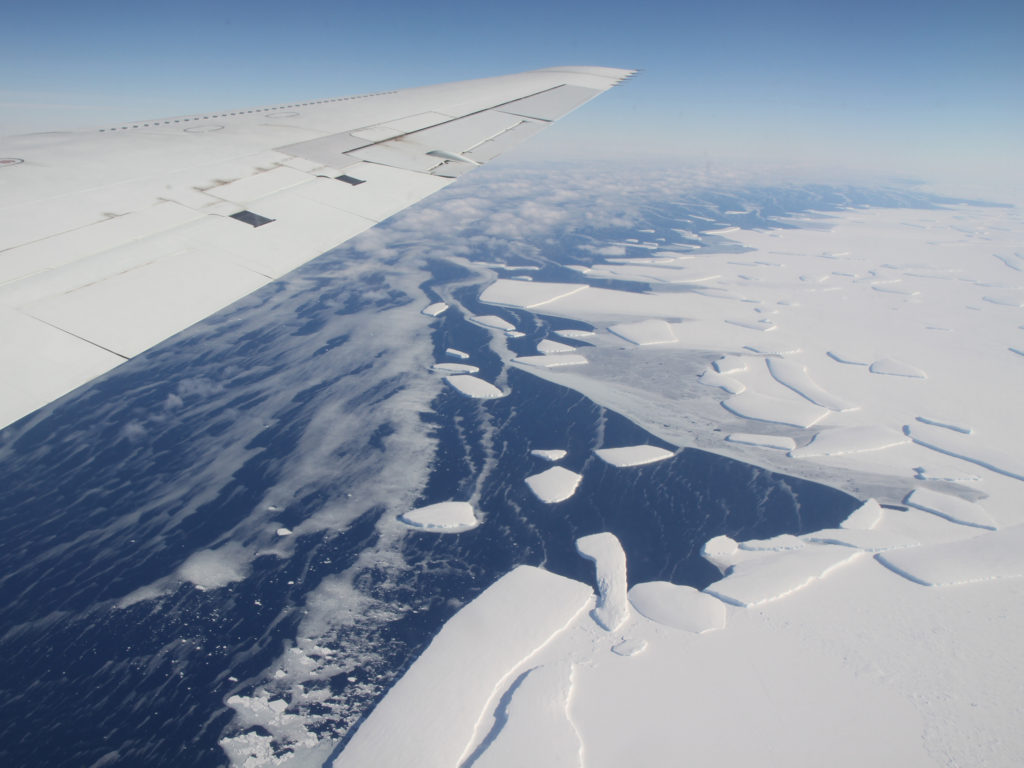
A rapidly-growing crack in the fourth-largest ice shelf in Antarctica has scientists watching for it to break off entirely. By early February, the crack in the Larsen C ice shelf was more than 100 miles long and some parts of it were 2 miles wide. In the two-month period between December and February, the crack grew by 17 miles, a pace of about five football fields a day.
Once the crack reaches all the way across the ice shelf, the break will produce one of the largest icebergs ever recorded. There is only about 20 miles of shelf left and the crack is placing tremendous stress on the remaining portion. The break could happen at any time.
If the ice shelf does break at the crack, it would significantly change the landscape of the Antarctic peninsula and greatly reduce the structural support of the ice in the region. The ice breaking off itself would not contribute significantly to global sea level rise because the ice was already floating above water.
The greater concern is the effect that the collapsing ice shelf would have on the glaciers that flow behind it. The ice shelf has a buttressing effect on the glaciers that flow into it. Without the shelf, the glaciers will feel less resistance to flow, essentially removing the cork from the bottle. Melting ice from the glaciers would cause much higher levels of ocean rise.
The impending collapse in the Larsen C ice shelf is seen as a warning that as we move forward, much larger amounts of ice in West Antarctica could be vulnerable.
**********
Web Links
A Crack in an Antarctic Ice Shelf Grew 17 Miles in the Last Two Months
Photo, posted October 27, 2012, courtesy of NASA Goddard Space Flight Center courtesy of Flickr.
‘Cracking in the Antarctic’ from Earth Wise is a production of WAMC Northeast Public Radio.